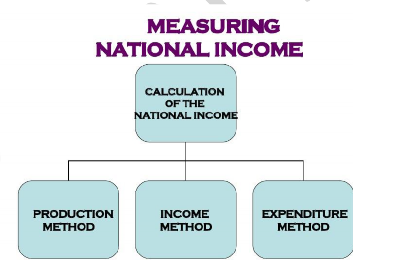4.1. Types of Exchange Rates
Economists distinguish between two exchange rates: nominal exchange rate and real exchange
rate. Let’s discuss each in turn and see how they are related.
Nominal Exchange Rate is the relative price of the currencies of two countries. For example, if the exchange rate between the U.S. dollar and the Indian Rupee is Rs. 60 per dollar, then you can exchange one dollar for 60 Rupees in world markets for foreign currency. When people refer to “the exchange rate’’ between two countries, they usually mean the nominal exchange rate.
Nominal exchange rates are established on currency financial markets called "forex markets", which are similar to stock exchange markets.
Real Exchange Rate is the relative price of the goods of two countries. That is, the real exchange rate tells us the rate at which we can trade the goods of one country for the goods of another. The real exchange rate is sometimes called the terms of trade.
Till now we have discussed the bilateral exchange rates which facilitate conversion of one’s currency into other. There is a concept of Effective Exchange Rate which describes the relative strength of a currency relative to basket of other currencies.
Thus, the Nominal Effective Exchange Rate (NEER) is the weighted average value of nominal exchange rate of the rupee against the currencies of major trading partners of India. On the
other hand, the Real Effective Exchange Rate (REER) is the weighted average of Real Exchange Rates of Rupee against the currencies of major trading partners of India.
The weights are determined by the importance that a home country places on all other currencies traded within the pool, as measured by the balance of trade. Unlike NER and RER, NEER and REER are not determined for each foreign currency separately. Rather, each is a single number that expresses what is happening to the value of the domestic currency against a whole basket of currencies. It gives some reference or benchmark about how the currency is performing in relation to the rest of the world as a whole, rather than just individual countries.

Even though Indian GDP calculated in rupees can be converted to dollars using market determined exchange rate but such an exercise has its own limitations. Such a market determined exchange rate only takes into account exports and imports and neglects non-traded GDP, which produced and consumed domestically. In such a situation, the concept of Purchasing Power Parity (PPP) is used.
The Purchasing Power Parity tells us how much of a basket of internationally traded goods and services can be bought with Indian rupee in India vis-à-vis how much of the same basket can be bought in the US with the help of a dollar. Therefore, whereas the market determined exchange rate might be Rs 60 for a US dollar, the PPP exchange rate may show this parity at Rs 30 for a US dollar. This ultimately results in a greater GDP at PPP rates when compared to GDP at market rates for India.
